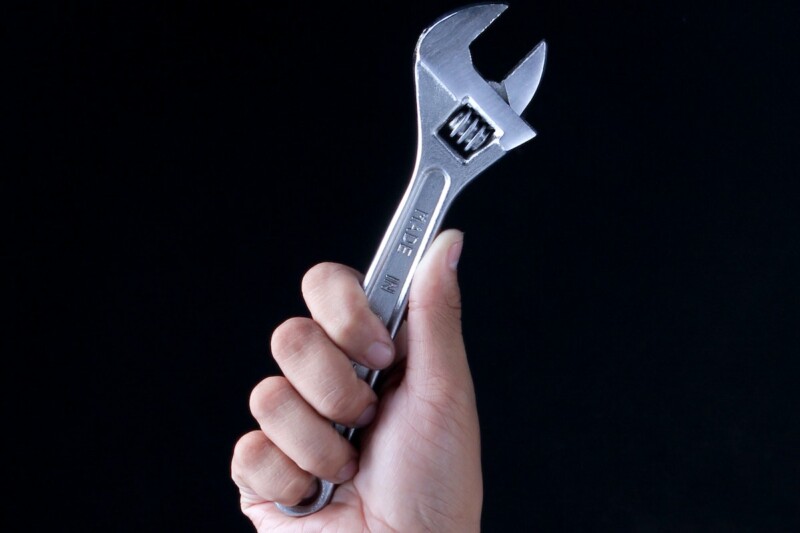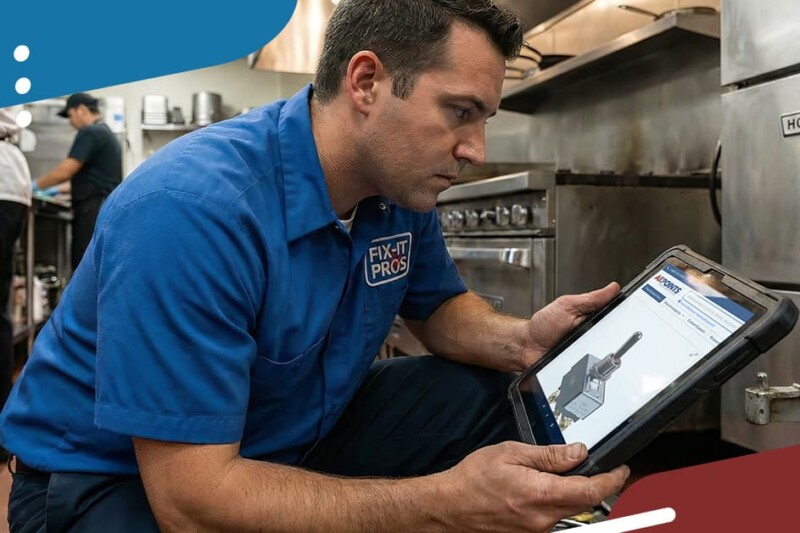BACKSTORY: Bin Bashing
About three years back, 30-year repair vet Scott Hester, owner of RSI Refrigerated Specialist in Dallas/Fort Worth, sent a tech on a service call to a well-known casual dining restaurant to tend to a problem with its month-old ice machine and bin. The complaint was that the cubes in the bin all stuck together.
“We figured that either the ice machine needed a freezing cycle adjustment, or else it was a case of the ice just not being used fast enough,” Hester says. Stored ice fuses together if it’s not used in a reasonable time; the result, after removing any loose cubes, is what Hester calls an ice cave. “Operators have to loosen the ice in order to scoop it out,” he says. Adjusting the freezing cycle is simple; unfortunately, employees had their own solution.
“The bin was a 1,600-lb. unit, about 5-ft. wide. And every square inch of the ice bin’s exterior was dented, like it’d been in a hail storm,” Hester says, pulling up the photo his shocked tech had texted that day.
“It turns out that workers would open the bin doors and no ice would fall out. And ice in the bin was stuck together, cube on cube. Instead of using the plastic wand or the ice rake that came with the bin to free the ice and break up sheets, they’d take the butt-end of the wand, which is made of the same heavy-duty plastic used in cutting boards, and use both hands bat-style to take swings at the bin, trying to shake the ice loose,” Hester says.
“They managed to ruin the brand new $4,000 ice bin in a matter of weeks,” Hester says. “Those dents caused the foam insulation to pull away from the sheet metal exteriors.” Photos of the dented bin made their way up the chain’s chain of command. “We heard later that the restaurant manager was let go,” Hester says.
While the ice bin abuse in this case was extreme, Hester and his team see plenty of bin battering at restaurants, bars, c-stores and more. “When an ice cave develops inside the bin, workers will slam the door to make the ice break up instead of using tools to break up the ice that came with the bin,” Hester says. Repeated slamming stresses door hinges and wears out plastic components. When those components fail, plan for costly repairs or a new bin.
Hester remembers one manager who, spotting a few dents on his restaurant’s ice bin, used humor to prolong its life. “He hung a sign on the ice maker/bin that read, ‘Hello, I’m a $15,000 piece of equipment. If you don’t beat on me, I’ll work for you for a long time.’ And the beatings stopped.”
About three years back, 30-year repair vet Scott Hester, owner of RSI Refrigerated Specialist in Dallas/Fort Worth, sent a tech on a service call to a well-known casual dining restaurant to tend to a problem with its month-old ice machine and bin. The complaint was that the cubes in the bin all stuck together.
"We figured that either the ice machine needed a freezing cycle adjustment, or else it was a case of the ice just not being used fast enough," Hester says. Stored ice fuses together if it's not used in a reasonable time; the result, after removing any loose cubes, is what Hester calls an ice cave. "Operators have to loosen the ice in order to scoop it out," he says. Adjusting the freezing cycle is simple; unfortunately, employees had their own solution.
"The bin was a 1,600-lb. unit, about 5-ft. wide. And every square inch of the ice bin's exterior was dented, like it'd been in a hail storm," Hester says, pulling up the photo his shocked tech had texted that day.
"It turns out that workers would open the bin doors and no ice would fall out. And ice in the bin was stuck together, cube on cube. Instead of using the plastic wand or the ice rake that came with the bin to free the ice and break up sheets, they'd take the butt-end of the wand, which is made of the same heavy-duty plastic used in cutting boards, and use both hands bat-style to take swings at the bin, trying to shake the ice loose," Hester says.
"They managed to ruin the brand new $4,000 ice bin in a matter of weeks," Hester says. "Those dents caused the foam insulation to pull away from the sheet metal exteriors." Photos of the dented bin made their way up the chain's chain of command. "We heard later that the restaurant manager was let go," Hester says.
While the ice bin abuse in this case was extreme, Hester and his team see plenty of bin battering at restaurants, bars, c-stores and more. "When an ice cave develops inside the bin, workers will slam the door to make the ice break up instead of using tools to break up the ice that came with the bin," Hester says. Repeated slamming stresses door hinges and wears out plastic components. When those components fail, plan for costly repairs or a new bin.
Hester remembers one manager who, spotting a few dents on his restaurant's ice bin, used humor to prolong its life. "He hung a sign on the ice maker/bin that read, ‘Hello, I'm a $15,000 piece of equipment. If you don't beat on me, I'll work for you for a long time.' And the beatings stopped."
RELATED CONTENT
- Advertisement -
- Advertisement -
- Advertisement -
TRENDING NOW
- Advertisement -
- Advertisement -
- Advertisement -


